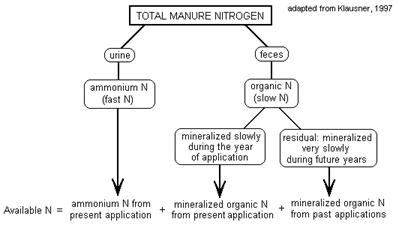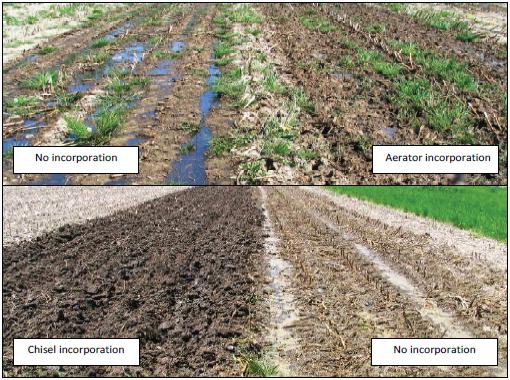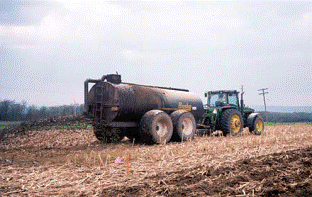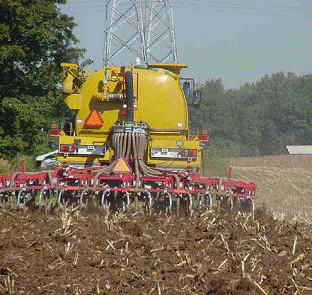Competency Area 4: Nutrient Sources, Analyses, Application Methods
PO 33. Calculate manure application rates from manure analysis information.
Manure is a readily-available byproduct of livestock operations, and contains many nutrients that are essential to plants. Manure contains several N pools, which can be separated into two main categories:
- Ammonium N (may be listed as "inorganic N" on manure reports), or "fast N"
- Organic N, or "slow N"
These pools behave differently in terms of N release for plant growth. Ammonium N is readily-available, while organic N is less available and may take months or years to become available. Thus, when calculating manure application rates, you must take into account the manure applied in prior years.
Although concepts of N availability over time are accepted in all states in the Northeast, actual N credits might differ from state to state. Refer to Land Grant University guidance for state-specific recommendations.

Decay series for stable organic N in manure vary by animal type. To determine the amount of N that will be available to the present crop, you must account for the N from the application of the present crop plus any residual N that will be available from manure applications in recent past years. The table below provides the factors to estimate the N from the present application and from past applications. The "present year" factor would be taken times the amount of organic N applied in the present year. A "last year" factor of 12% indicates that an estimated 12 % of the organic N applied in the manure last year is expected to be utilized by the present crop (a year after application). Therefore this factor would be taken times the amount of organic N applied in the manure last year. A similar calculation would be done if manure was applied two years ago.
Cornell guidance for manure organic N release by animal type (Klausner, 1997, derived from work by Klausner et al., 1994
Cornell guidance for estimated ammonia-N losses as affected by manure application method (Klausner, 1997, derived from work by Lauer et al., 1976)

Comparison of manure incorporation methods (image source)

Manure broadcast without incorporation (image source)

Injection of manure (image source)
Quick Links
- Competency Area 1: Basic Concepts of Plant Nutrition
- Competency Area 2: Basic Concepts of Soil Fertility
- Competency Area 3: Soil Testing and Plant Tissue Analysis
- Competency Area 4: Nutrient Sources, Analyses, Application Methods
- Competency Area 5: Soil pH and Liming
- Competency Area 6: Nutrient Management and Planning
